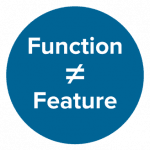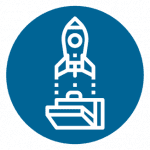5 Ways to Improve Your Next VA/VE Initiative
March 1, 2021

Written By:
Brian Lauer | Team Lead | Manufacturing Tech

For those who may be unfamiliar, Value Analysis and Value Engineering (VA/VE) is a problem-solving methodology that uses two effective processes for optimizing the value of a product or service. What differentiates them is the point when they are applied in the product life-cycle process.
Value Engineering is conducted before any significant financial investments (i.e. tooling, plant, or equipment costs) are made in a launch or offering.
Value Analysis happens after product development; it focuses on existing products or services.
The objective of both practices is the same: to improve value. What is the definition of value in this context? It is the ratio of function to cost. Consequently, improving value involves some combination of cost reduction and functional advancement.
Why do world-class companies make the investment in VA/VE? VA/VE provides significant benefits including: reducing costs— not only in product development but in all areas of a business; increasing revenues and profits; improving product functions; and increasing the value to the customer.
Sounds great but there are many challenges to any improvement process, and VA/VE is no exception. Every organization experiences unique achievements and antagonisms during a VA/VE campaign. From my years of experience, I would like to highlight five key ways to help your next VA/VE initiative succeed.
5 Key Ways to Help your VA/VE Initiatives Succeed
 1. Separate Functions from Features
1. Separate Functions from Features
Every product or service has at least one function. The main function is what your product provides and is the most elemental purpose for the product’s existence. Product features, on the other hand, can be viewed as how the function is accomplished or how the consumer experiences the product. While features can positively differentiate your product from another with the same function, features also can negatively drive cost.
To be successful with your VA/VE process, you need to be able to differentiate your product’s functions from its features. With value being the ratio of function to cost, there needs to be clarity in what your product’s functions are. Don’t allow your VA/VE process to get misled with a function that is actually a feature. By doing this you could forfeit cost-saving opportunities because either the features were misidentified, or in some cases, due to paradigms and biases. Features need to be addressed on the cost side of the ratio and not confused with functions. Although this part of the process takes relatively little time, it requires focus and will set the stage for success.
 2. Select a Great VA/VE Leader
2. Select a Great VA/VE Leader
To set the groundwork, be intentional about developing or selecting a VA/VE leader who is unbiased, a good communicator, and believes in thorough functional distillation. The leader must guide the team in creating a well-defined problem statement in order to arrive at effective solutions. Your leader must be experienced in research, organization, and preparation. They should lead the VA/VE team through critical and objective thinking with clear and consistent boundaries. The right VA/VE leader assignment will make all the difference.
 3. Acquire Multi-Disciplinary Support
3. Acquire Multi-Disciplinary Support
An effective VA/VE initiative requires support and participation from across the organization. It also needs active sponsorship and corporate engagement. A cross-functional team must be assembled to understand the life cycle costs associated with performance, reliability, availability, quality, and safety. If you’re looking for someone to lead your VA/VE process that has many years of experience from nearly every manufacturing industry, contact the DISHER Manufacturing Technology Team.
 4. Generate Lots of Ideas
4. Generate Lots of Ideas
The more ideas generated— the better. When it comes to VA/VE, I would much rather have the burden of ranking a ton of ideas as opposed to having too few. Think about it. The process of sharing ideas, good or otherwise, inspires even more ideas. Sowing lots of idea seeds gives you greater potential to harvest great solutions. Increase your odds of success with as many ideas as possible!
Encouraging an abundance of ideas requires coaching in divergent thinking and establishing an open, comfortable environment. Paradigms must be deconstructed, and pet designs neutralized. A climate that encourages productive-free expression and probing questions and eliminates judgement or disapproval should be cultivated. For this part of VA/VE, assemble a group representing nearly every functional area in the business and prepare them with the objective and rules of engagement well before any meeting takes place. If possible, consider priming them with materials to educate them in idea generation and be sure to provide for their comfortable and undistracted participation in the idea-generation meeting.
When I think of this part of the process, a DISHER Whiteboard Workshop™ comes to mind. It is a proven process for maximizing idea generation. In similar fashion, afford your facilitator with adequate planning and preparation time. Make certain they are equipped with plenty of idea prompters and boosters to inspire the team, and this portion of the VA/VE process can yield great results.
 5. Execute!
5. Execute!
Every part of the VA/VE process up to this point could be accomplished but would be fruitless without executing the necessary change processes to realize the improvement ideas. That should not be a profound realization. Nonetheless, insufficient execution has been a reality in some well-intended VA/VE programs. Despite all the initial investment and energy organizations create, momentum is often lost before reaching the end goal.
Doesn’t this seem symptomatic of our human nature? There are hundreds of books written on effective-plan execution or the concept of finishing what we start. I won’t begin to assume I can motivate you better than any published authors. I just want to emphasize that VA/VE is a commitment to the end— all the way through execution and establishing the improvement ideas selected. Determine your organization’s resolve and commitment before you even begin your next VA/VE initiative.
Next Steps
Successful VA/VE campaigns take leadership, support, ideas, and execution. Ultimately, the perseverance and determination within the team is critical to its success.
For those who have experienced positive VA/VE outcomes, you may recognize some of the hurdles identified here and have found similar ways to overcome them. For others who have not fared as well or lack experience with VA/VE processes, DISHER offers VA/VE Workshops and can partner with you to develop your systems for improved performance.
Related blogs: The Value of Your Problem Statement, An Easy Approach to The Engineering Design Process

 1. Separate Functions from Features
1. Separate Functions from Features 2. Select a Great VA/VE Leader
2. Select a Great VA/VE Leader 3. Acquire Multi-Disciplinary Support
3. Acquire Multi-Disciplinary Support 4. Generate Lots of Ideas
4. Generate Lots of Ideas 5. Execute!
5. Execute!